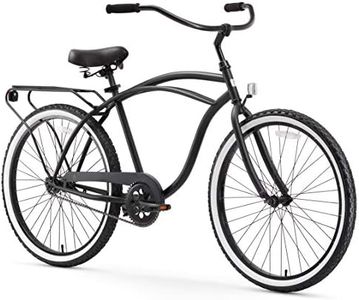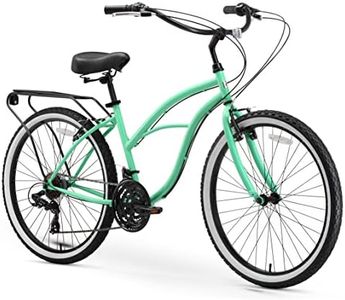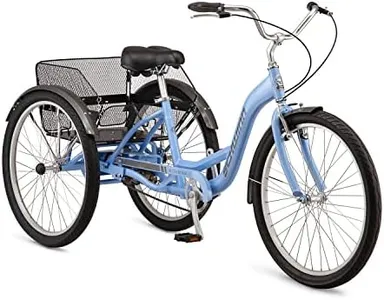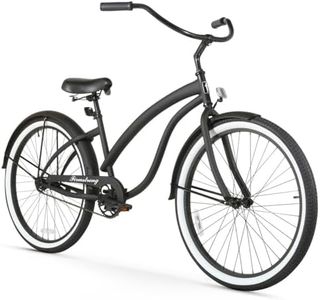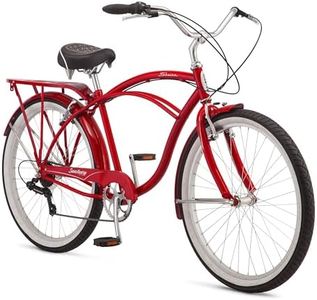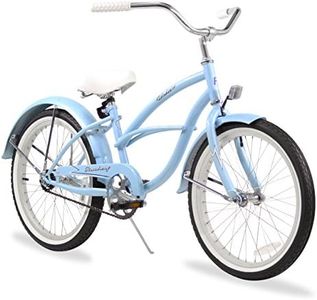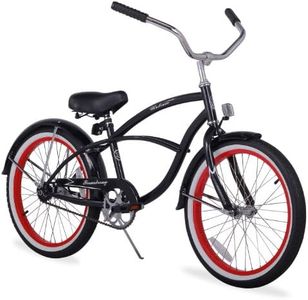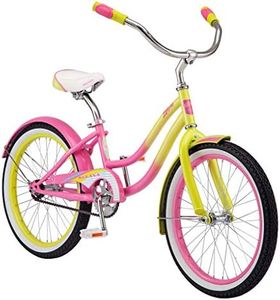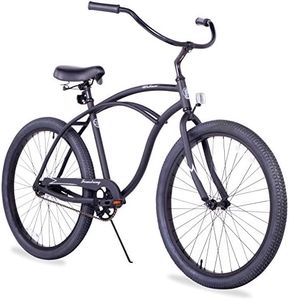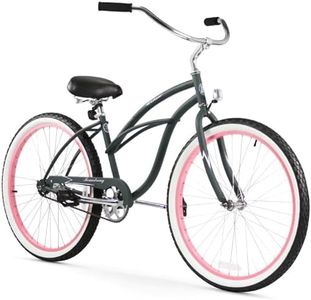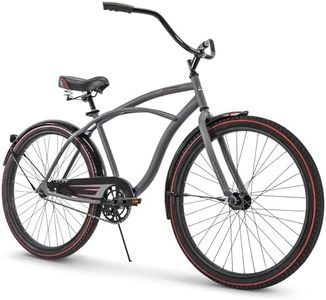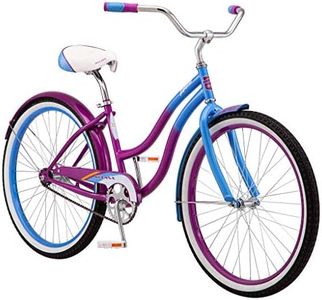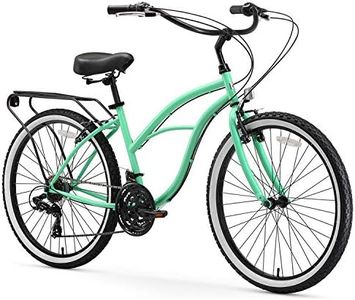We Use CookiesWe use cookies to enhance the security, performance,
functionality and for analytical and promotional activities. By continuing to browse this site you
are agreeing to our privacy policy
10 Best Cruiser Bikes
From leading brands and best sellers available on the web.Buying Guide for the Best Cruiser Bikes
Choosing a cruiser bike is all about finding comfort and enjoyment for relaxed rides around town, at the beach, or on quiet paths. Cruiser bikes are built for casual cycling, with a focus on a comfortable riding position, stylish looks, and simplicity. When shopping for a cruiser bike, your personal comfort, how you plan to use the bike, and any special preferences should guide your decision. Consider how far and how often you'll ride, the terrain you'll encounter, and any additional features you might want for convenience or looks.Frame MaterialThe frame material determines the weight, durability, and feel of your bike. Cruiser bikes are usually made from steel or aluminum. Steel frames are heavier, but known for their strength and smooth ride, making them great if you value comfort and a classic feel. Aluminum frames are lighter and rust-resistant, which is helpful if you'll be cycling near water or lifting your bike often. Choose steel if ride comfort or traditional style is important, and aluminum if you prefer a bike that's easier to handle and maintain.
Wheel SizeWheel size affects how the bike handles and how comfortable your ride will feel. Most cruiser bikes come with 26-inch wheels, which provide a smooth, stable ride that's ideal for flat or gently rolling paths. Some cruisers have smaller wheels (24-inch) for shorter riders or larger wheels (up to 29-inch) for taller riders or those who want a faster feel. Choose the wheel size that matches your height, comfort preference, and where you'll ride the bike most.
GearingGearing refers to how many speeds or gear options your bike has. Single-speed cruisers are the simplest, requiring less maintenance and perfect for flat terrain or short rides. Bikes with 3 or 7 gears offer more flexibility if you plan to tackle small hills or want an easier ride over longer distances. If your routes are mostly flat and leisurely, single-speed may be best. If you have hills or want to go farther, extra gears will make your rides easier.
BrakesBraking systems on cruisers are usually either coaster brakes (pedal backwards to stop) or hand brakes (squeeze levers on handlebars). Coaster brakes are very simple and reliable for flat areas. Hand brakes offer more control, especially on varied terrain, or if you'll be stopping frequently. If you want simplicity and don't plan on riding in tricky conditions, coaster brakes may suffice. For more control or hilly areas, hand brakes are the better choice.
Seating and Handlebar StyleThe type of seat (saddle) and handlebar affect your comfort and seating posture. Cruiser bikes usually have wide, cushioned seats and upright handlebars to keep you sitting tall, which is best for comfort and relaxation. Handlebar shapes, such as swept-back or high-rise, may change your arm and back position, so try different options if you can. Pick the setup that makes you feel most comfortable, especially if you plan to ride for extended periods.
Fenders, Racks, and AccessoriesMany cruiser bikes come with additional features like fenders, racks, and baskets. Fenders protect you from splashes if you ride in damp conditions. Racks and baskets are useful for carrying bags, groceries, or other items on your ride. Consider what you'll carry and the types of environments you'll ride in. If you see yourself transporting items or riding through puddles, these accessories will add convenience and enjoyment.
